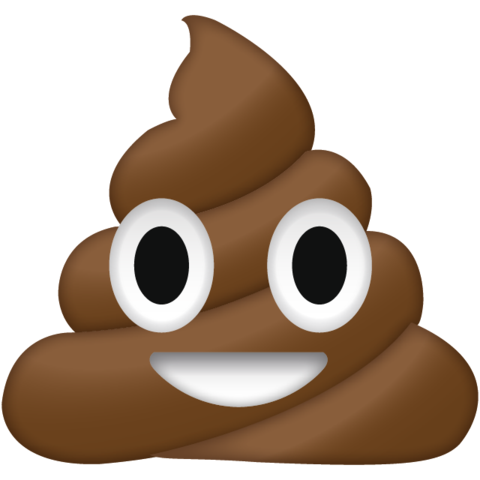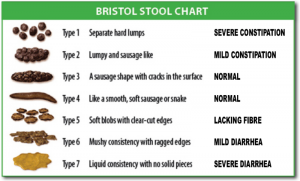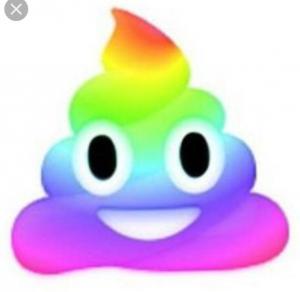Identify the potential cause of your cat's diarrhea

Cat diarrhea can be mild, or severe and serious. There are multiple possible causes for cat diarrhea and there are things you can do to help. The first step is to identify the problem and its cause.
Does my cat have diarrhea?
You may be surprised to know that there is a poo scale. That’s right, a poo scale. It is called the Bristol Stool Chart, and you can even get it printed on the side of a mug, or a t-shirt, if the desire grabs you!
The Bristol Stool Chart identifies seven different types of poop, from severely constipated, to severe diarrhea. Not only that, but it gives us a wonderful picture of each type of poo.
If you think your cat may have diarrhea, this the Bristol Stool Chart is the place to start.

Compare your cat’s poo to the pictures in the chart and figure out where on the scale your cat is. This is very helpful for your vet too, as it gives them an idea of how severe the problem is. The Bristol Stool Chart allows you to objectify the shape and form of your cat’s poops.
Cat diarrhea colours

The next stage is even more glamorous...it is colour: what colour is your cat diarrhea? Along with shape and form, colour can be an important indicator of what problems might be going on.
-
Dark brown: perfect poo colour! Healthy cat poop is mid-dark brown in colour. The dark brown colour is a result of bile. Bile is initially green, but turns to yellow and then brown as it passes through the digestive system. Bile is required to digest fat.
-
Yellow: yellow poop can be a sign of Giardiasis, as a result of an infection with Giardia, a parasite. Can also be a diet to high in fat or a food intolerance.
-
Orange: orangey poop that is quite oily is often a symptom of too much fat in the diet, or of the fats not being properly absorbed. This can suggest IBS/IBD, malabsorption disorders, problems with bile, or just an unsuitable food.
-
Grey/White: grey, white, or very pale coloured poo is not a good sign. It is caused by a lack of bile in the stool and usually suggests that the liver is not functioning properly. Seek veterinary attention
-
Black: black poop can either be severe constipation which has caused the water to be totally drained from the fecal matter, making it appear black. In that case the poo would be very small and hard, and a number 1 on the Bristol Stool Chart. Black poop can also be caused by blood entering the feces in the upper digestive system. It can be caused by a stomach ulcer.
-
Red, or bloody streaks/mucus: Usually a sign of blood entering the fecal matter in the lower digestive system, often from hemorrhoids. Can also be a virus or other stomach bug.
This list of colours and possible causes is not exhaustive. Your cat’s poop is definitely a barometer of his health, so if your cat’s litter habits change, please visit your vet.
What to do if your cat has diarrhea
- Identify where your cat’s poop is on the Bristol Stool Chart.
- Identify what sort of colour or colours your cat’s poop usually is. If you are struggling to see the colour of the poo you could try using Catsan hygiene litter because it is white, so it is easy to see the exact colour of everything in it! You can buy catsan hygiene litter here (#affiliatelink). Read more about litter choices in our cat litter reviews.
- If you have more than one cat, separate them if you can. Cat diarrhea is often caused by something infectious.
- Empty litter trays twice daily and clean them with an antiviral cleaner. Find a suitable litter tray cleaner.
- Use hooded litter trays to minimise litter tracking and clean up any tracked litter daily
- Clean food and water bowls every day
How to help manage and treat cat diarrhea
Having a cat with dairrhea is a miserbale business, and in some cases can lead to poo-y pawprints around your home. Here are three ways to help you manage your cat's diarrhea and keep your sanity:
1. Pro-kolin probiotic contains probiotics and calming substances that slow down movement through the bowels and help calm diarrhea. It is a highly effective product and definitely worth trying. You should see a difference within a couple of days. Get it on Amazon here (#affiliatelink). Sometimes probiotics alone are enough to calm a bout of diarrhea, especially diarrhea caused by IBS. Even where the diarrhea has a more serious cause, pro-kolin will help you manage the symptoms whilst you investigate the cause.
2. Use a clay litter. Clay clumping litters tend to encase anything wet, which means that any diarrhea is less likely to get stuck on paws and walked out of the litter tray. Try Catsan ultra fine clumping litter. (#affiliatelink)
3. Use Anigene antivoral cleaner or a similar product, in case the diarrhea has a viral or bacterial cause. This will eliminate bacteria and viruses from the litter tray and surrounding area. The less bacteria and/or virus your cat keeps coming into contact with, the quicker they will clear the virus. If the cause is campylobacter or some other bacteria that can also be caught by humans, this will also keep you safer as well. Buy Anigene on Amazon here (#affiliatelink).
Mild cat diarrhea
If you consider the diarrhea to be relatively mild, and probably caused by diet, then you can try to change your cat’s diet and see if that has any effect. Do this gradually as dietary changes can exacerbate symptoms. A while ago we had a litter of kittens on Bozita, and their poos were all slightly orange in colour and a little greasy. We changed them on to an alternative food with a lower fat and offal content and almost immediately their poos were perfect. High offal content food tends to be high fat which can lead to slightly orange, greasy poos.
Severe cat diarrhea
If your cat has severe diarrhea, or if the diarrhea is pale, grey, black or yellow seek veterinary assistance.
Cat diarrhea causes
There are multiple causes of cat diarrhea, including
-
Dietary sensitivities
-
Parasites: including giardia, cryptosporidium, tritichomonas foetus, worms,
-
Bacterial infections: including campylobacter, e-coli
-
Viruses: including coronavirus, cat flu, FIP
-
Liver failure
-
Systemic failure
If you tell your vet the Bristol Stool Chart score and the colour of your cat’s diarrhea this will really help them to narrow down the possibilities and reduce the amount of test your cat may need to have. If you are not sure, or you are not good at describing things, take some photos of the poo and show them to your vet….gross, but totally worth it, and your vet will be used to talking about poo, and looking at it!
Read more...
- why a cat not eating is a medical emergency
- litter tray cleaning options